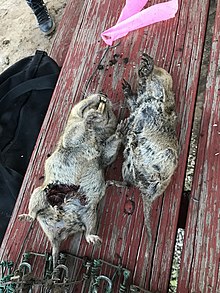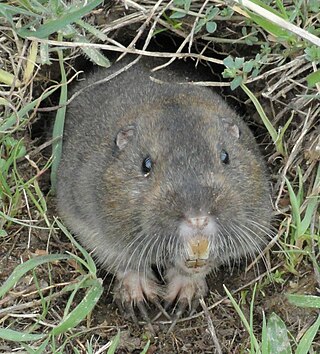
Pocket gophers, commonly referred to simply as gophers, are burrowing rodents of the family Geomyidae. The roughly 41 species are all endemic to North and Central America. They are commonly known for their extensive tunneling activities and their ability to destroy farms and gardens.
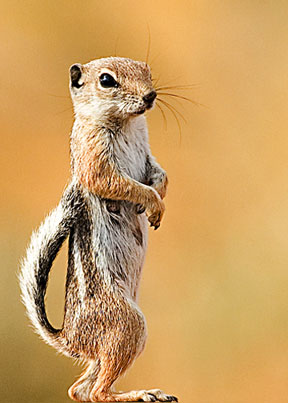
Sciuromorpha ( 'squirrel-like') is a rodent clade that includes several rodent families. It includes all members of the Sciuridae as well as the mountain beaver species.

The smooth-toothed pocket gophers, genus Thomomys, are so called because they are among the only pocket gophers without grooves on their incisors. They are also called the western pocket gophers because they are distributed in western North America. They are considered distinct enough from other pocket gophers to be recognized as a separate subfamily or tribe.
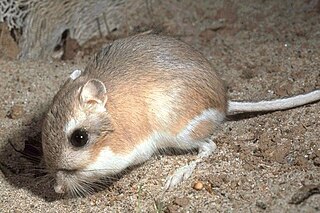
Geomyoidea is a superfamily of rodent that contains the pocket gophers (Geomyidae), the kangaroo rats and mice (Heteromyidae), and their fossil relatives.
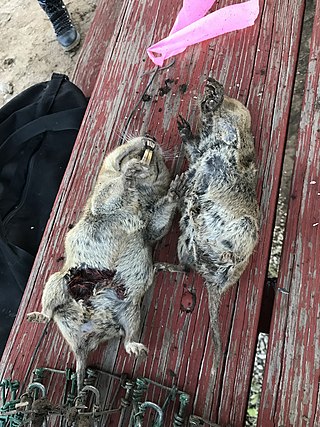
The yellow-faced pocket gopher is a species of pocket gopher that is native to shortgrass prairies in the south-western United States and northern Mexico. It is the species that lives north of the Southern Coahuila Filter-Barrier (SCFB). Among the different species, the yellow-faced pocket gopher has a small to medium-sized skull. The fossil of this genus was recorded from the pre-Pleistocene Benson Beds of Arizona.

The desert pocket gopher is a species of rodent in the family Geomyidae. It is found in the state of Chihuahua in Mexico and in Texas and New Mexico in the United States.
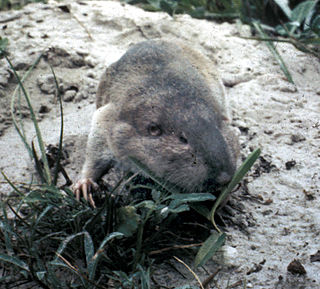
The Texas pocket gopher is a species of rodent in the family Geomyidae. It is found in Tamaulipas in Mexico and in Texas in the United States.
Heterogeomys is a genus of rodent in the family Geomyidae, found in Mexico, Central America and Colombia. Heterogeomys are a small genus of rodents commonly known as pocket gophers, though the term applies to all genera within the family Geomyidae. The name pocket gopher was earned for this family because of their fur lined cheek pouches that can be used for carrying food. These pouches can also be turned inside out. Species of Heterogeomys are regarded as pests, one of less than 5% of rodent species classified as pests, and the history of man's attempts to control their populations reaches back into Mayan times. Despite some efforts to the contrary, populations of Heterogeomys seem to be on a general upwards trend. Furthermore, all of the species of Heterogeomys are considered to be of Least Concern in the World Status Key.
The Darien pocket gopher is a species of rodent in the family Geomyidae. It is occurs in Panama and Colombia. Some authors classify it in the genus Orthogeomys, but recent research has allowed this and its related species to be classified in the genus Heterogeomys.
The giant pocket gopher, also known as the Oaxacan pocket gopher, is a species of rodent in the family Geomyidae. It is found in Mexico, Guatemala, El Salvador and Honduras. It is the type species of the genus Orthogeomys; some zoologists also include in this genus species that have recently been placed in Heterogeomys.
The hispid pocket gopher is a species of rodent in the family Geomyidae. It is found in Mexico, Belize, Guatemala, and Honduras. Some authors classify it in the genus Orthogeomys, but recent research has allowed this and its related species to be classified in the genus Heterogeomys.

The smoky pocket gopher is a species of rodent in the family Geomyidae. It is endemic to the Trans-Mexican Volcanic Belt in Mexico, in the states of Jalisco, Colima, Michoacan, Guanajuato, Queretaro, Hidalgo, Estado de Mexico, and the Mexican Federal District. Its natural habitat is subtropical or tropical dry lowland grassland. Molecular phylogenetics has revealed that this species also includes the animals formerly separated as C. gymnurus, C. neglectus, C. tylorhinus and C. zinseri.

Merriam's pocket gopher is a species of rodent in the family Geomyidae. It is endemic to Mexico, where it is found in the area of the Valley of Mexico and the Valley of Toluca at elevations from 1800 to 4000 m. Its favored habitats are the Zacatonal grassland and temperate pine-oak woodlands, as well as farmland and rangeland. Its karyotype has 2n = 36 and FN = 68.

The camas pocket gopher, also known as the camas rat or Willamette Valley gopher, is a rodent, the largest member in the genus Thomomys, of the family Geomyidae. First described in 1829, it is endemic to the Willamette Valley of northwestern Oregon in the United States. The herbivorous gopher forages for vegetable and plant matter, which it collects in large, fur-lined, external cheek pouches. Surplus food is hoarded in an extensive system of tunnels. The dull-brown-to-lead-gray coat changes color and texture over the year. The mammal's characteristically large, protuberant incisors are well adapted for use in tunnel construction, particularly in the hard clay soils of the Willamette Valley. The gophers make chattering sounds with their teeth; males and females make purring sounds when they are together, and the young make twittering sounds. Born toothless, blind and hairless, the young grow rapidly before being weaned at about six weeks of age.

The Idaho pocket gopher is a species of rodent in the family Geomyidae. It is rather small, with a lightly built skull. Its fur color varies through the body and between individuals. Found in the western United States, it inhabits savannas, shrubland, and grasslands. Individuals live alone in burrows, staying active year-round. Many aspects of its behavior and biology are not well understood. The species is classified as being of least-concern by the International Union for the Conservation of Nature.

The southern pocket gopher is a species of rodent in the family Geomyidae. It is found in Mexico and the United States, usually in high altitude grassland and shrubland. It feeds on plant material and has an extensive burrow above which is a large heap of earth on the surface of the ground.
The Michoacan pocket gopher is a species of rodent in the family Geomyidae. It is monotypic within the genus Zygogeomys. It is endemic to Mexico where its natural habitat is temperate, high-altitude forests. Its numbers are declining and it is listed by the IUCN as "endangered".
Goldman's pocket gopher, is a species of rodent in the pocket gopher family. It is distributed throughout northern Mexico. It was formerly considered a subspecies of the yellow-faced pocket gopher. It is named after Edward Alphonso Goldman, who collected the holotype of this species.

The Oriental Basin pocket gopher is a species of pocket gopher which is endemic to Mexico. It was first described in 1895 by Clinton Hart Merriam. It was considered to be a subspecies of Merriam's pocket gopher in the late 20th and early 21st century but has been reinstated as its own species. The IUCN Red List has evaluated it to be of least concern.
The Perote pocket gopher, or Cofre de Perote pocket gopher, is a species of pocket gopher in the family Geomyidae.
